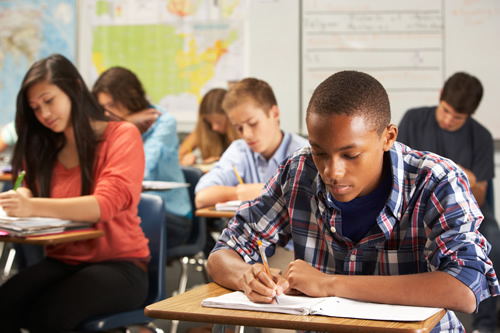The Dynamic Landscape of Student Communities
In today’s interconnected globe, student neighborhoods play an essential duty fit academic and individual experiences.

These neighborhoods are not just collections of people yet are dynamic environments that promote growth, finding out, and cooperation among students. They vary widely in type and feature, from campus-based groups to international online forums, each offering one-of-a-kind possibilities for engagement and development.
Whether you are tipping onto an university campus for the very first time or engaging in virtual understanding atmospheres, recognizing the framework and benefits of pupil areas can substantially enhance your educational journey. This write-up delves into the significance of pupil communities, checking out how they operate, the advantages they offer, and the methods which they can be leveraged for personal and academic success.
Understanding Trainee Areas
Trainee areas are fundamental to the scholastic experience, acting as both social and instructional support group. At their core, these areas are teams formed naturally by students that share common rate of interests, objectives, or fields of study. They can be informal, such as study groups, or official, like trainee unions and clubs.
These communities are identified by a shared identity and the collective pursuit of expertise, abilities, and experiences. They function as systems for trainees to link, collaborate, and contribute to each other’s development, prolonging beyond scholastic limits to affect individual growth and area involvement.

Fundamentally, pupil communities are microcosms of bigger societal frameworks, where management skills are developed, concepts are exchanged, and lifelong relationships are created. The communications within these communities show a varied mix of cultural, intellectual, and social dynamics.
- Networking Opportunities: Pupil communities provide a network of peers and coaches that can provide support and support.
- Skill Development: Engaging in community tasks assists pupils establish vital skills such as interaction, management, and synergy.
- Resource Gain access to: These communities often supply access to scholastic sources, including study materials and skilled suggestions.
- Social Engagement: They use a platform for social communication, relieving the shift right into brand-new scholastic settings and aiding to fight seclusion.
Through these numerous features, student neighborhoods end up being important to the alternative growth of pupils, laying a structure for future professional and personal success.
The Benefits of Engaging in Pupil Communities
The benefits of participating in trainee communities are diverse, impacting both academic and individual rounds.

On an academic level, these communities motivate collective understanding, permitting pupils to benefit from diverse perspectives and experience. Sharing understanding and resources within a neighborhood can result in extra efficient knowing outcomes and enhanced scholastic efficiency.
In addition, pupil neighborhoods supply a system for individual development and self-discovery. By engaging with peers from different backgrounds and self-controls, trainees gain a more comprehensive worldview, enhancing their cultural proficiency and empathy. This direct exposure to diverse point of views is invaluable in creating important thinking and analytic skills.
Furthermore, energetic involvement in area tasks can improve pupils’ confidence and self-worth. Tackling management functions or joining discussions and occasions cultivates a feeling of accomplishment and belonging, which is vital for general health and motivation.
Types of Pupil Areas
Pupil neighborhoods can be found in numerous kinds, each satisfying various passions and objectives. These can be broadly classified right into scholastic, social, entertainment, and professional neighborhoods, to name a few. Each kind supplies one-of-a-kind systems and possibilities for student interaction.
- Academic Communities: These are usually centered around details disciplines or academic passions. Instances consist of study hall, honors cultures, and departmental clubs.
- Social Communities: These teams concentrate on promoting social awareness and diversity, usually organizing occasions and activities to commemorate various traditions.
- Entertainment Neighborhoods: These include sporting activities teams, entertainment clubs, and hobby-based teams that offer a break from academic roughness and advertise physical and mental health and wellness.
- Professional Communities: These are focused on occupation development, supplying networking chances, workshops, and mentorship programs to prepare students for the expert globe.
By identifying and engaging with the ideal neighborhoods, trainees can tailor their college experiences to align with their interests and profession aspirations, leading the way for a fulfilling scholastic trip.
Developing a Flourishing Trainee Area
Producing and maintaining a prospering student neighborhood calls for initiative and collaboration from both trainees and educational institutions. It starts with promoting a comprehensive environment where all trainees really feel invited and valued despite their backgrounds.
Institutions can support this by giving resources and centers that urge interaction and participation. This consists of creating physical areas like trainee unions and online platforms that help with communication and partnership. Furthermore, arranging events, workshops, and workshops can even more enhance engagement, edtech platform giving students with possibilities to connect and gain from each various other.
Management and Trainee Participation
Effective leadership is vital in nurturing an effective student neighborhood. Leadership functions within these areas offer pupils a possibility to establish and show their organizational and interpersonal skills. Students that presume these functions add dramatically to establishing the tone and direction of their neighborhoods, influencing their peers positively.
Motivating leadership and active participation amongst pupils not just reinforces the area yet likewise equips people, preparing them for future challenges. By promoting a culture of collaboration and support, trainee communities can grow, leaving an enduring effect on their participants and the scholastic environment in its entirety.
